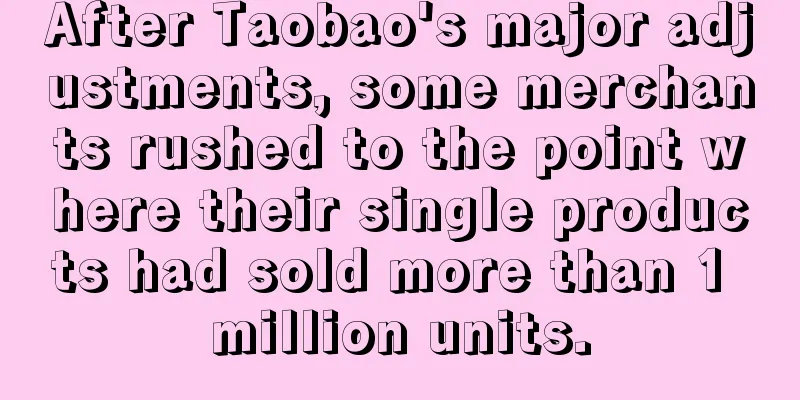How much money can you make by selling 5,000 kilograms of tea?

Every year in March and April, you can always see some friends selling tea in our circle of friends. Of course, this also includes me, the village chief. Our family can sell 5,000 kilograms of tea a year. How much money do you think we can make? 1. I am a tea farmer. Picking tea is very hard work.Friends who know the village chief know that I am from Huangshan, Anhui. Among the top ten famous teas in China, Anhui accounts for four of them, and Huangshan has three: Huangshan Maofeng, Keemun black tea, and Taiping Houkui. My family has been tea farmers since our ancestors. We mainly grow Huangshan Maofeng, a high mountain variety. Anyway, my grandfather, my father, me, and my own children, at least all know how to pick tea. We don't have many tea plantations, because my father and his four brothers divided the land and everyone got about the same amount. When I was a child, I both hated and liked picking tea. I liked it because I could earn some pocket money by picking tea after school and on weekends. The annoying thing is that tea picking is so hard work. You have to get up at four or five in the morning and can’t go home until dark, even if it rains. 2. I am a tea merchant, and selling tea is not easyMy family is also a tea merchant. My father and my fourth uncle have been in the tea business. My father should be the first person in the village to collect and sell tea. Then my uncle started learning from my dad, and now he is doing it himself. Being a tea merchant is also very hard work. As long as tea farmers pick tea and sell it, there will be people who will buy it, the only difference is the price. Especially now, we only need to pick the tea, unlike in the past when tea farmers had to make it themselves and then sell it, otherwise they would have to pay the price if the tea was spoiled. Now the risk of tea speculation has also been transferred to tea merchants, who are also responsible for sales. Tea merchants may really suffer the loss themselves, because the biggest problem with Huangshan Maofeng tea is that it is not suitable for long-term storage. Qihong, Pu'er, Jin Jun Mei, Zhengshan Xiaozhong and other teas are fermented teas. On the contrary, they become more fragrant and more valuable as they age. However, roasted tea like Huangshan Maofeng is no longer new tea after this year and has a shelf life. So when the market is bad, it will really be a big blow to yourself. 3. Why does good tea cost more than 800 yuan?Our village is very small, with a population of about a hundred households, but almost half of the people either work outside or settle down outside. During the tea season every year, the only young people in the village are me and my cousin. So our village is not a big tea-producing village. We have top-quality tea and many tea forests, but no one picks the tea, especially young people. Sometimes it’s not that young people don’t come back to collect, but that no job allows you to take a month off. Therefore, some places have to hire people to help pick tea, thinking that they can afford a high price. For example, in places like Hangzhou, Qiandao Lake, Anji, etc., there are tea pickers every year, and the daily salary ranges from 150 to 200 yuan. So why does good tea cost more than 1,000 yuan? Let me do some calculations for you. For the special buds that people often talk about, such as one bud and one leaf, or one bud and two leaves, it takes an average of 4.5 kilograms of raw leaves to make one kilogram of dry tea. The purchase price of this kind of raw leaves is generally between 100-150 yuan, so the cost of dry tea is about 500 yuan. Add to that the cost of manual picking, production, electricity, charcoal fire, loss, tea gift boxes, and express delivery fees, 500+150+50=700 yuan. For a special bud that costs 700 yuan, the retail price is increased by one or two hundred or even three or five hundred yuan, which is actually quite reasonable, because there are also costs for opening a store, labor, and refrigeration. Of course, three points must be emphasized: First, the price of raw leaves above 100 is generally only available before the Qingming Festival, because the price will drop after the buds grow bigger. Secondly, the purchase price of raw leaves varies from place to place because of the different varieties. For example, for some green teas and black teas, the larger the tea leaves, the better. Third, maybe you think that tea that costs 800, 1,000 or even 3,000 or 4,000 yuan is very expensive, but people drink it, and you give it as a gift for people to drink. 4. Selling 5,000 kilograms of tea a year is actually not profitableWe seldom do retail business and we are truly a source manufacturer. We supply tea to general tea shops or some well-known local tea brands. In a good year, we can produce 5,000 kilograms of dry tea a year, and in a worse year we can produce 3,000 kilograms. But we don’t actually make any money. In fact, we earn less than working as a worker. Firstly, we do not do retail. Instead, we are OEM for tea shops and tea brands. So we earn processing fees rather than the price difference of tea. The second reason is that green tea does not have financial attributes, so it is difficult to sell and may end up being a loss. The third is that the source merchants can only make money from OEM, not from branding, so they cannot sell the products at prices of several thousand or tens of thousands. Photo: Mom picking tea At present, our OEM price for one kilogram of tea is about 18 yuan, and 5,000 kilograms of tea means an income of 90,000 yuan. This income may seem pretty good, but if you calculate carefully, it's not much money. First, to produce 5,000 kilograms of dry tea in one tea season, at least 6 workers are needed, including the boss himself. Second, if there is no old employer, you will be responsible for production and sales. Generally, you will start collecting tea leaves at 2:00 p.m. and will be busy until three or four in the morning of the next day. Then it takes another one and a half hour drive to the tea trading market for sale. After selling them, they rush back home to rest for three or four hours. This continues for about one and a half months. Third, the purchase and production of tea involves various losses, as well as the costs of purchasing firewood, coal, electricity, workers' snacks, meals, postage, packaging, etc. 90,000 yuan, after deducting all costs, the net profit is about 40,000 yuan. This is just a rough calculation for you all, so as a tea merchant at the source, we actually don’t make any money. This is also a reference for friends who want to go home and make agricultural and sideline products or specialties. Many things are not as shiny as they seem. 5. Lack of sales is the biggest problemIt’s not that we don’t want to make money, nor that we don’t want to sell it ourselves. My dad and my uncle always asked me if I had any market opportunities and why I didn't sell my products myself. Well, actually I feel very sad because I really can’t sell it. Firstly, although I post on WeChat Moments, only a few people around me know that I sell tea, so your personal image is very important! Secondly, in my past work experience, I have not experienced and accumulated these channels, so everyone’s goals are very important. Whatever you want to do, you must lay the groundwork and accumulate in advance, rather than starting from scratch. Many people have always said that starting a business is from 0 to 1. In fact, this is not worth promoting. Starting from 0 is a mistake. Third, retail is an ongoing process, while wholesale is a one-time process. Although it makes less money, it is safer and has almost zero inventory or micro inventory. Fourthly, almost every province in southern China has its own tea brand. Regardless of whether it is famous or not, local users consume more than 80% of the retail sales. So even if you have some connections, it is quite difficult to sell tea to other provinces. Tea is not like fruit brands that have nationwide circulation; it has a strong local attribute. For example, Huangshan Maofeng’s main sales channel and consumer customers are in Anhui Province. Photo: Mom picking tea in the mountains So here I would like to remind you again: no matter when you plan to start a business, whether you are online or offline, whether you are retailing or wholesale, whether you are an individual or rely on salesmen, please ask yourself where your sales channels are and what preparations have you made for sales channels? In China, there is actually no shortage of products and customers. The reason why most companies fail is that they lack core and sustainable sales channels. Author: The village chief lives in Shili Village Source: WeChat public account "Shili Village (ID: shilipxl)" |
<<: Use "fast thinking" to fight the psychological battle of brand marketing
>>: After the limelight, the "miserable son" in the live broadcast room made a comeback
Recommend
How to cancel an Amazon store? Process introduction
Amazon has a lot of traffic, so it is a good choic...
Great! Someone from an MCN agency received a million-dollar luxury car as a year-end bonus
As an emerging industry, MCN has become a field th...
Does Shopee Thailand use English to list products? Can I list products in English?
When opening a store on Shopee, you need to select...
Continue to the volume, a comprehensive inventory of data career development paths
At the beginning of 2024, many students are thinki...
Why are Amazon orders canceled? Under what circumstances will Amazon close its stores?
Understanding the reasons why Amazon orders are ca...
Is cross-border e-commerce difficult to do now? What is the prospect of cross-border e-commerce?
With the acceleration of globalization and the dev...
Can Shopee open a store on behalf of someone else? How long does it take to close the store?
As the Shopee platform continues to grow, more and...
With private domain revenue exceeding 100 million yuan and a repurchase rate of nearly 40%, how does LemonBox, the No. 1 in its niche category, achieve growth through private domain?
Private domain marketing continuously follows up a...
Focus on e-commerce promotion and delivery capabilities offline, Chengfeng fully open
As e-commerce platforms continue to evolve, Xiaoho...
2022 Mid-Autumn Festival Dunhuang.com Partial Business Adjustment Notice
Dunhuang.com announced a notice in early September...
The consultant's true fragrance law
This article reveals what consultants do, industry...
Is it serious if the bank card for foreign trade payment is frozen for half a year? How long will it take for it to be automatically unfrozen?
One of the risks of doing foreign trade is that yo...
Data analysis implementation process
Teacher Chen uses the case of a large after-sales ...
30 years of Internet idolization: a history of the demise of Internet celebrities
On the Internet, there is never a shortage of new ...
Differentiation is a cover, price increase is the real effort
With so many brands today, many brands are trouble...









